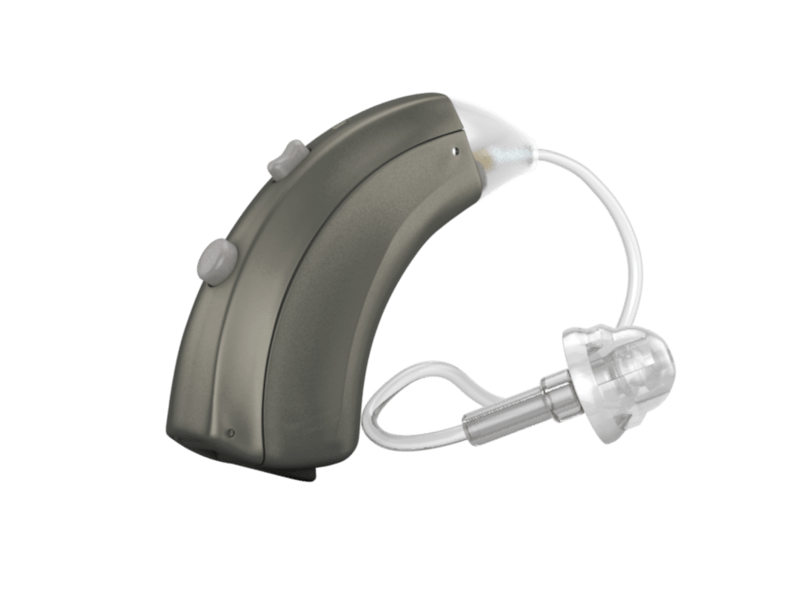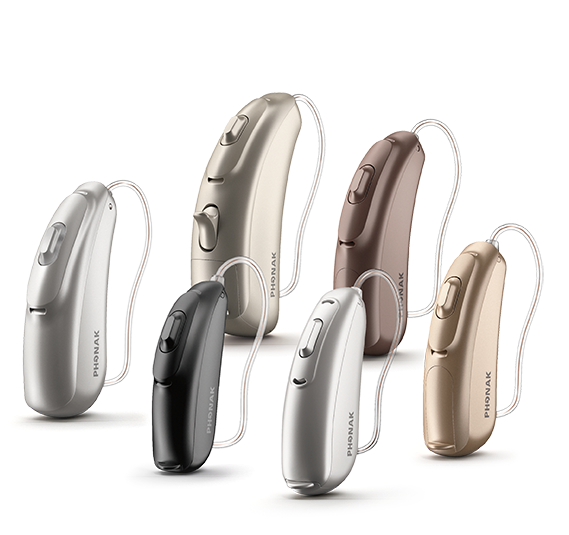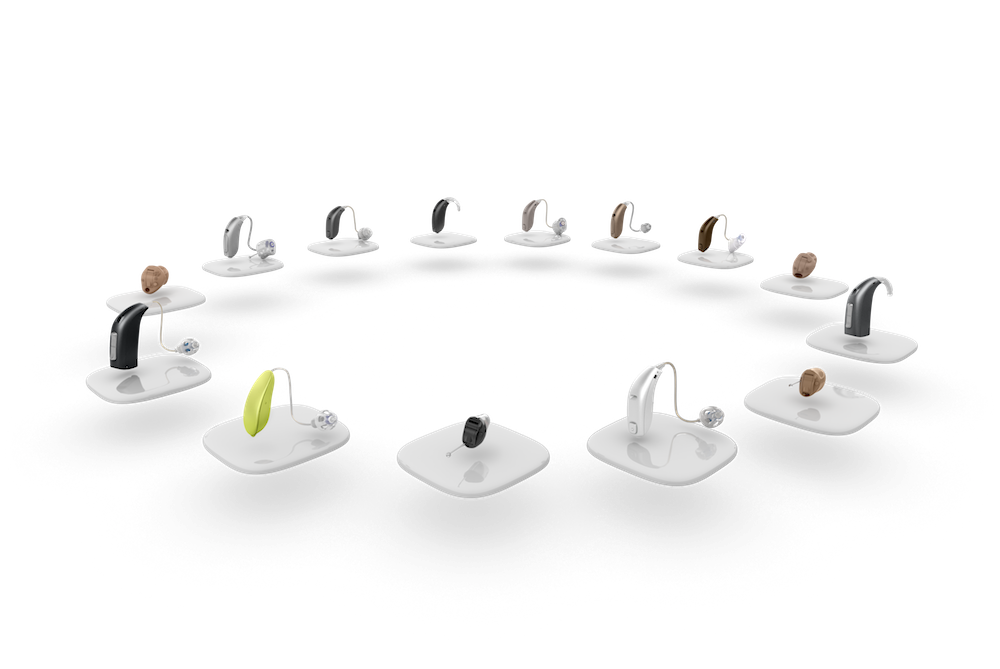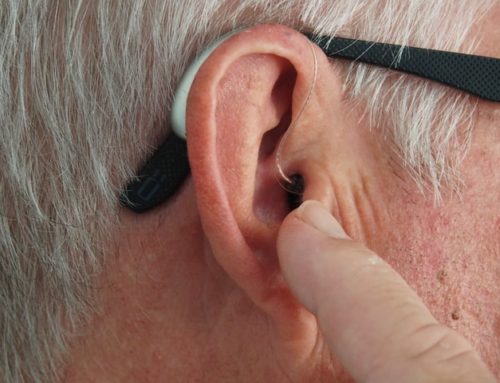Hearing aids are divided into two major categories, the rear (external) and the internal (internal). The rear hearing aids are divided into two subcategories, the classic Behind The Ear (BTE) and the headphones whose speaker is located inside the user’s ear canal (RIC). The in- ear hearing aids are distinguished in the FORE (In The Canal) that are applied to the auditory canal and a small part of them also covers the external canal and in the CIC (Completely In the Canal) which are smaller in size and are applied only inside the ear canal.
Each independent hearing aid consists of the following:
Microphone: picks up the sound and converts it into an electrical signal.
The amplifier: modifies the electrical signal.
Loudspeaker: converts electrical signal into sound.
The battery: provides the power required to operate the handset.
BTE – Behind The Ear

In classic behind-the-ear hearing aids, all the components (microphone, loudspeaker, etc.) are located behind the ear. In addition, this type of headset consists of the following:
The angle that helps support the handset on the user’s blade.
The mold is inserted into the user’s ear canal. It is worth noting here that there are different types of casts and the most appropriate one depends on the size of the hearing, the age and the size of the auditory canal of each person.
The tube that connects the handset to the mold. There is the classic tube as well as a tube with a smaller diameter called thin tube. The choice between the two depends on the size of the hearing loss and whether the user sweats.
Practically in these headphones, the sound is produced in the headphone located behind the fin and transmitted through the cannula to the mold and then to the hearing aid drum.
The indications for the application of BTE are:
Pediatric cases.
Senior citizens.
People with anatomically difficult anatomical pores.
People with difficulty handling eg deforming arthritis.
For every type and size of hearing aid.
RIC – Receiver In the Ear

In RIC headphones, the microphone and amplifier are located on the outside, behind the user’s wing. But the loudspeaker (unlike BTE) is located inside the ear canal. In addition, this type has the following:
An electrode that connects the earphone behind the ear to the loudspeaker inside the ear canal.
At the end of the speaker (inside the ear) is either a silicone nipple or a small mold. The choice between the two depends on the ecological findings.
Practically in these headphones, the sound is produced directly inside the hearing aid of the hearing aid.
The indications for the application of RICs are:
Persons for whom adequate ventilation of the auditory canal is considered necessary for reasons of hygiene.
People with hearing loss only in the medium and high frequencies.
When the aesthetic factor plays an important role.

ITE (In The Canal) & CIC (Completely In the Canal)
At ITE & CIC, all the mechanical parts of the earphone (microphone, amplifier and loudspeaker) are located inside the ear canal and there is absolutely nothing behind the ear flap.
As with RIC headphones, the sound is output directly into the hearing aid.
The indications for the application of ITE & CIC are:
When the hearing loss does not exceed 75-80 dB HL and there are no other contraindications.
People who feel very insecure about the aesthetic result. But here it is worth noting that in many cases, especially in women, RIC headphones are more discreet than inland. This is due to the fact that the RIC loudspeaker is completely lost in the hearing aid and the rest of the earphone behind the earlobe is so small that in combination with the hair it makes it invisible.
People with morphologically suitable auditory canal.
Younger people and many times older people find it difficult to use these headphones.







Leave A Comment